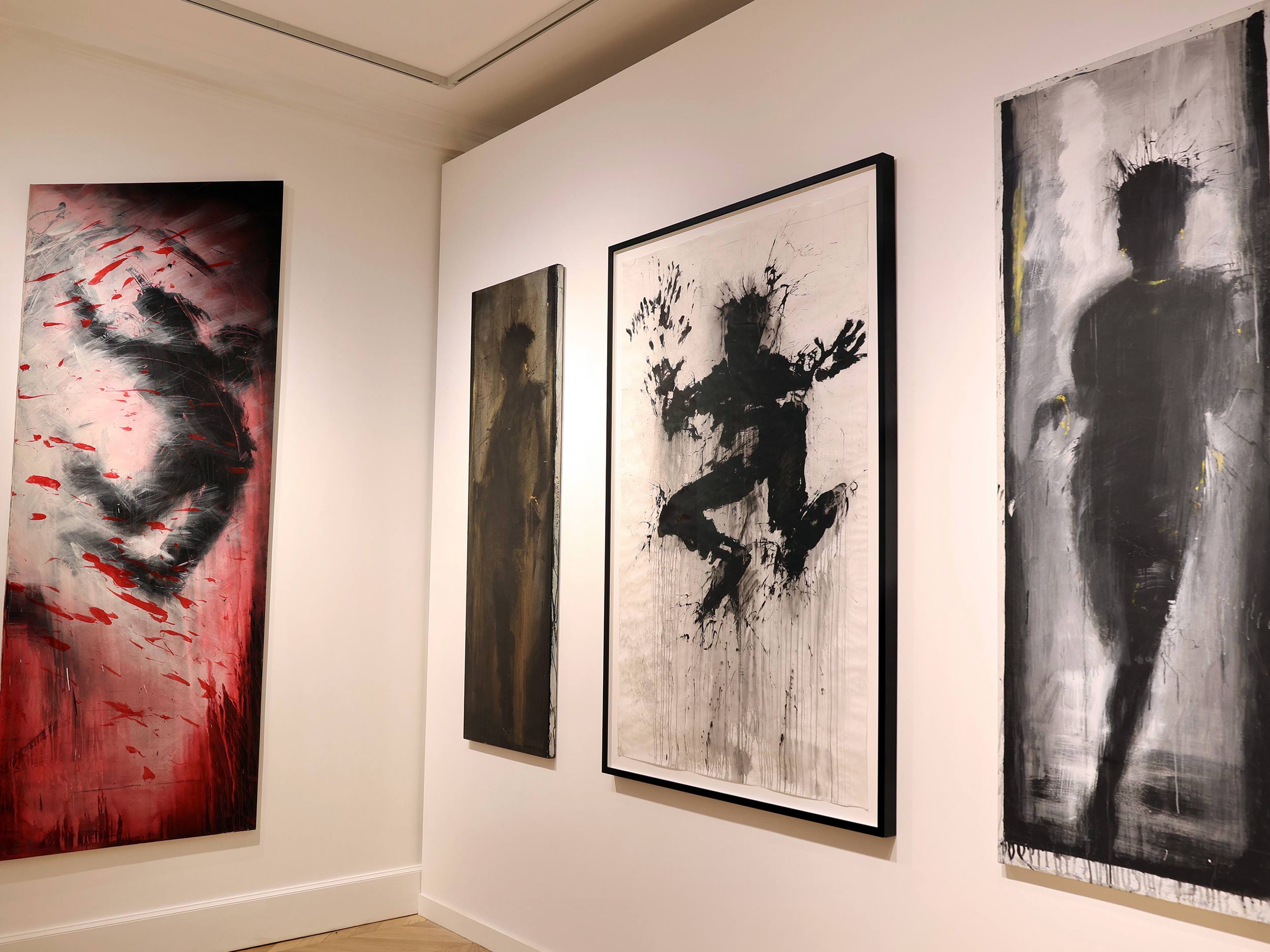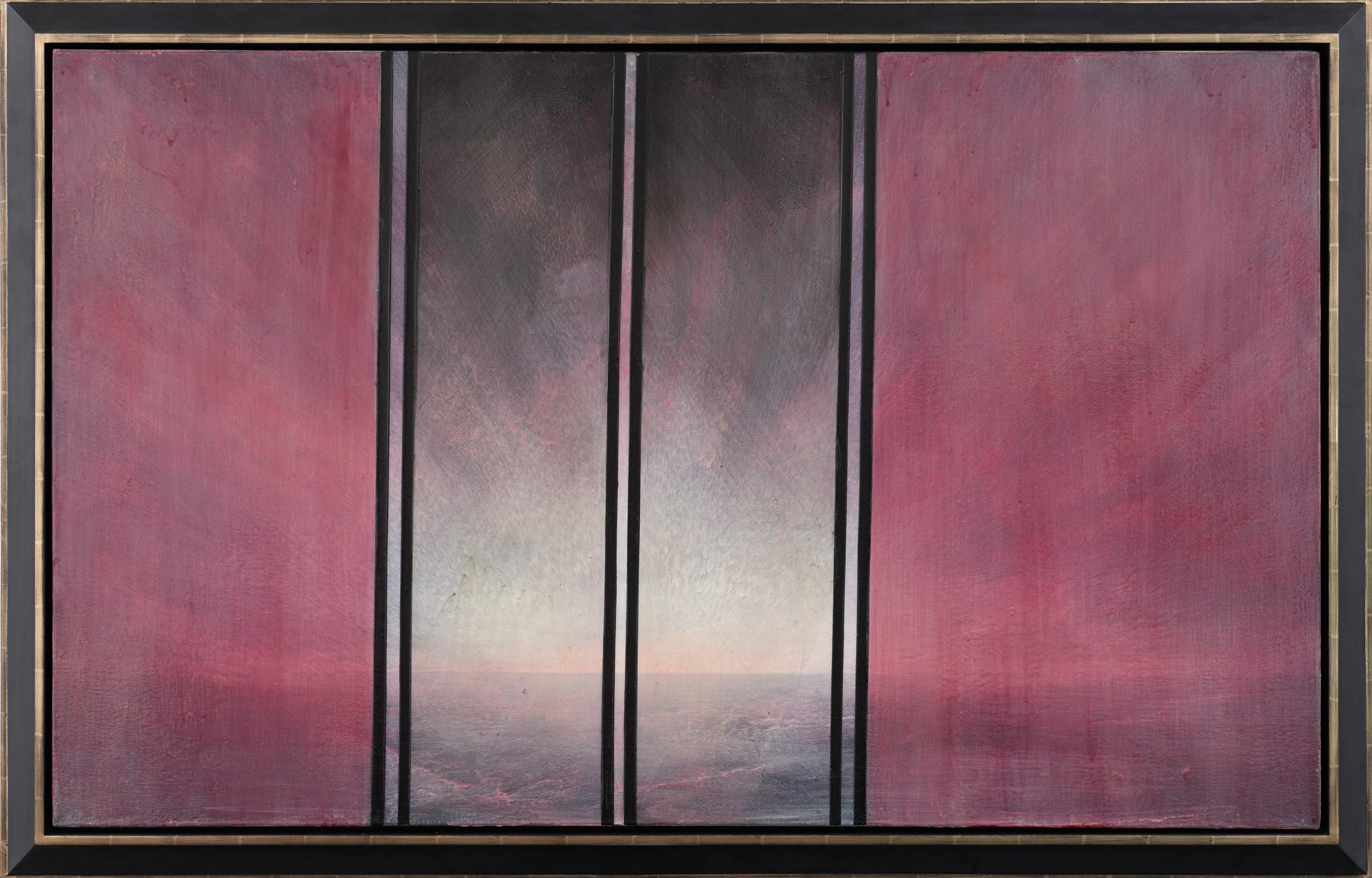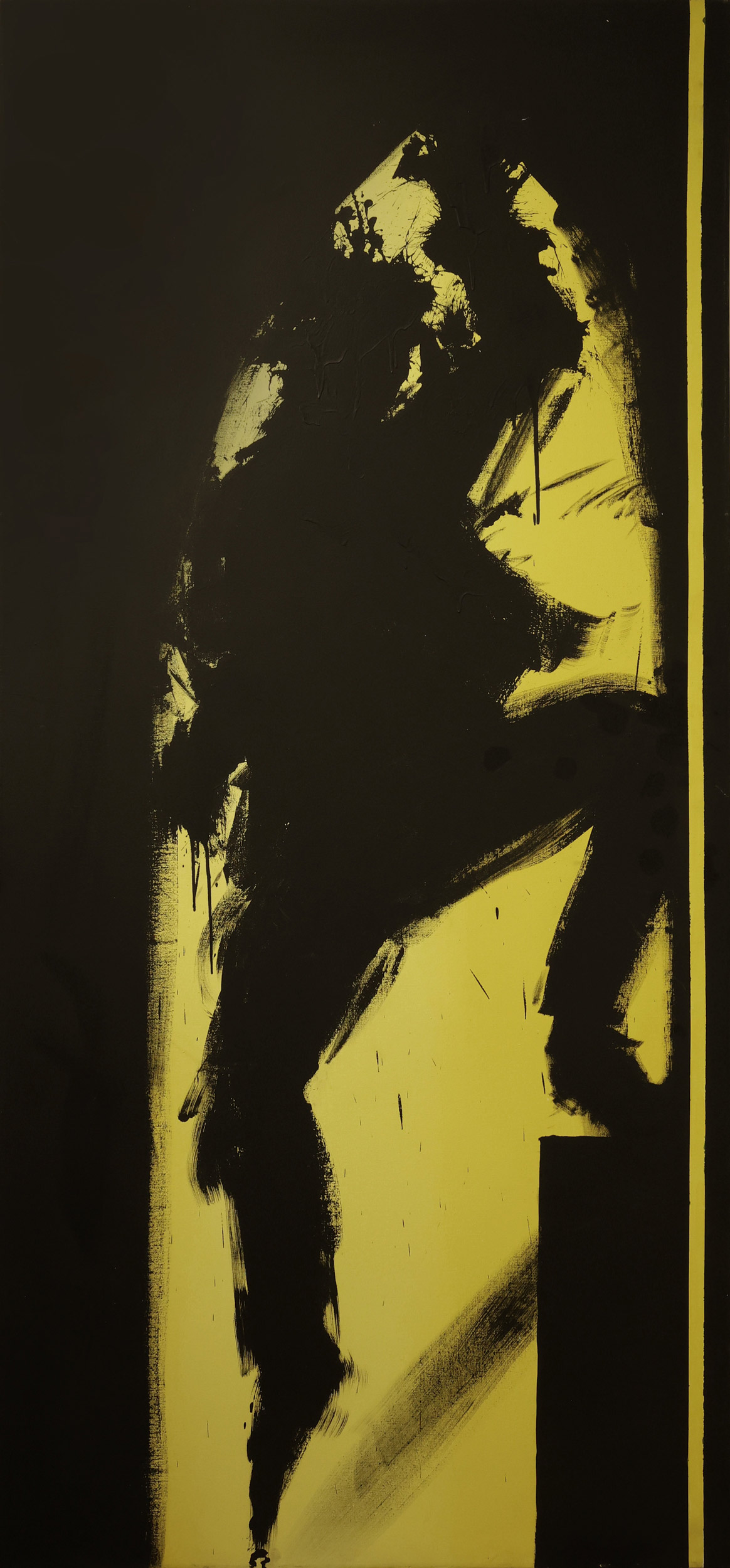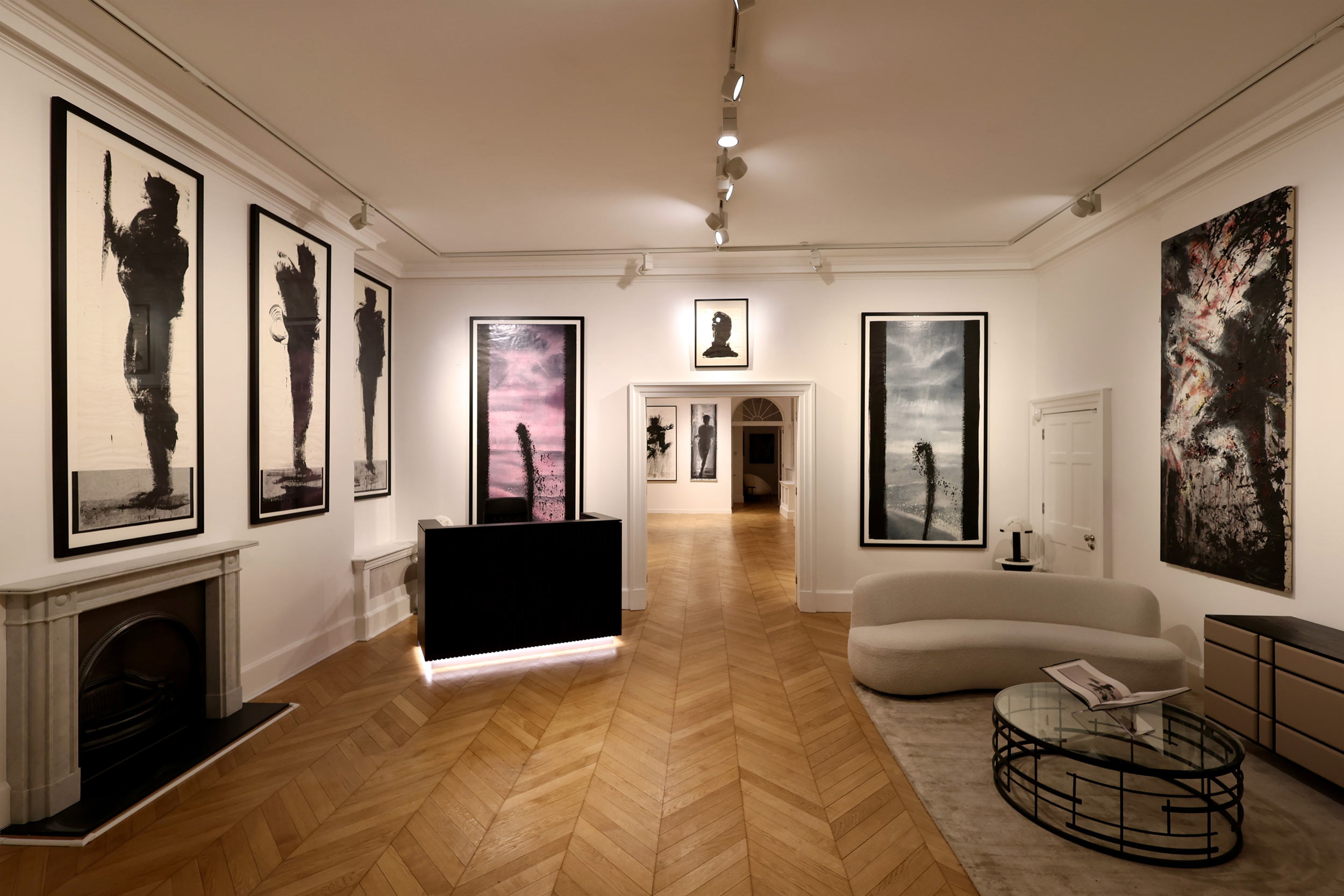Gallerist Ronald Sosinski and curator Joseph Bannan discuss the making of the retrospective, and the creative legacy of ’80s New York
“Our relationship was artist-to-artist,” says Ronald Sosinski on Richard Hambleton, otherwise known as the “Godfather of Street Art.” The former ran an East Village gallery in the early-’80s—and though he didn’t represent Hambleton himself, the pair were friends; Sosinki felt a great love for the artist’s work, and for his chosen medium more broadly.
Just last week, at Woodbury House in London, an exhibition featuring 22 compositions from Hambleton’s prime went on display. Its centerpiece is Mr Wonderful, “a masterwork containing every important aspect of [the artist’s] iconography,” in the words of Sosinski, containing “a serene-self-portrait, a landscape demonstrating his amazing skills as a painter, a black stripe—which is a formal reference to the American master Barnett Newman—and a red tape outline, [pointing] to the work of Barbara Kruger.” The staging is striking: a series of impressionistic figures, shrouded in shadow, urgently obscured by streaks of paint, and laden with emotion.
“[It came from] something which was classified as criminality. Richard Hambleton used the street as his canvas, but he is a true artist.”
Though Hambleton died in 2017, his legacy lives on, growing stronger through retrospective shows such as these. He’s credited as a pioneering force in the realm of street art, alongside Basquiat and Haring and all their storied contemporaries. During the ’70s and ’80s, the movement was at its height—something Sosinski attributes, in part, to the economic state of New York City at the time: “It became the perfect situation for total freedom of expression, with no concern for financial return—it did not exist.” In other words, the reasons to make art were pure and direct: to make a statement—political, cultural, aesthetic, or otherwise—with no regard to the whims of the market.
Says Joseph Bannan—director at Woodbury and curator behind the exhibition—the movement’s arrival to the mainstream gallery world is testament to its relatability to a public audience. “[It came from] something which was classified as criminality. Richard Hambleton used the street as his canvas, but he is a true artist.”
The show is a must-see—a time-capsule memorializing a culture in flux. It strives to enshrine artists like Hambleton within the pages of creative canon, rather than relegating them only to the corners of their niches. “It’s right at the epicenter of art history,” Bannan goes on. “Street art and its evolution has to be the most groundbreaking of any genre ever.”
Mr Wonderful is on view at Woodbury House through February 28, by appointment only.















